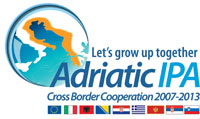
1) Which are the main features of the miniaturized machines for agro-food processing?
Firstly, they include in a unique machine, tools that are generally part of a more complex, industrial structures (olive mills, cheese producers, agro-food transformation industry), without compromising the quality of the processed products.
The machines run on electric power but can function with renewable energy and/or fuel, resulting in a reduced environmental impact.
Furthermore, the machines can easily be moved from one place to another.
2) How much do these machines cost?
All the machines have a sustainable cost for one or an association of farmers; depending on the typology of the apparatus. Starting from solar drier (starting at €2,500), up to €60,000 for the machines that process jam and juice. The mini olive mills ranges from €6,000 to more than €50,000, according to the capacity of olives per hour.
3) Which types of farms might be interested?
Micro and Small farms.
4) It is already possible to see the outcome of the performance achieved by any of these machines?
Most of these machines were developed as prototypes under the MIERI project, funded by the Italian Ministry of Agriculture. It is possible to examine them through links at the MIERI website, www.mieri.entecra.it, in order to get more information.
5) What are the main features of the mini cheese-factories?
A brief list of the main components / features of the machines:
1. Multipurpose basins for pasteurization and curdling with heated steam at low
pressure with a stirring motor, the possibility of heating and cooling with cold water and direct injection of steam.
2. Plug-in steam generator that runs on methane or LPG, with water softener (70x95x190 cm).
3. Table for the processing of the product (90x120x100 cm).
Production in a SMALL-SCALE (200 liters of milk) and maximum dimensions 80x80x80 cm;
6) What are the main technical characteristics of the micro-system for the processing of fruit and vegetables?
The machines are built in such a way as to ensure the absence of manipulation of the product being processed, so as to grant high quality to the finished goods.
The system is versatile and flexible; all components are multifunctional and are integrated and independent at the same time (they work autonomously). The system allows automatic glass jar packaging (jams, concentrates, sauces, natural and concentrated purees, fruit compotes, etc.). The following parts make up the machine:
1) WORK TABLE FOR SORTING AND WASHING RAW MATERIALS;
2) Strainer with different sieves;
3) CONCENTRATION (water evaporation) under VACUUM Dome at low temperature
4) Automatic DOSING / FILLING IN JARS
5) WATER BASIN FOR PASTEURIZATION
6) AUTOCLAVE
7) BASE;
8) CONNECTIONS AND ASSEMBLY;
9) ELECTRICAL PANEL
7) What are the main technical characteristics of the solar dehydrator(s)?
Its function is to remove water from plant matter, using clean energy (solar).
The main difference between these machineries and traditional, non-solar, dehydrators is that the discontinuous process of solar dehydrators significantly improves the quality of the finished product.
The main technical features are:
INDUSTRIAL SOLAR DEHYDRATOR
ZefiroMAX is a device for dehydrating vegetables, fruit, vegetables, meat and fish. Working capacity: 350 kg of product in a production cycle of 3 days;
External dimensions: 600 x 220 x 220 cm
Internal usable dimensions: 590 x 210 x 190 cm
Average dehydrating temp. 40 ° C
Air flow: min. 4000 m3 / h max 9000 m3 / h
Radial flow fans: vel.1 900 m3 / h speed 2 1800 m3 / h
Thermal Pot Num: 10 KW *
Power supply: 220 Vac
Electric abs max: 500W
* Power measured at 1000 W/m2 of insolation
Trolley Size: 100 x 100 x 1500-10 shelves
Stainless steel Trays
© Zefiro is a device for the dehydrating of vegetables, fruit, meat and fish. Work with up to 35 kg of product in the production cycle of 3 days
Dimensions: 980 x 810 x 20 mm
Dimensions: 100.5 x 110 x 180 cm
Average drying temp. 40 ° C
Air flow: 1800 nm3 / h max
Thermal Power Nominal: 4 K w *
Useful load: 5.6 m2
Power supply: 12 Vdc
* Power measured at 1000 W/m2 of irradiance
8) What are the main technical characteristics of “Minifrantoio” (small olive mill)?
Oil production occurs in structures with very complex and cumbersome means (mills). Manufacturers of mini mills have been able to transfer the very complex processes to an extremely compact machine.
The machine must satisfy these 4 steps:
it must be mobile;
must have a work capacity of 25 kg-250 kg olives milled per hour;
must use little electricity;
must have a working capacity calibrated to the productive capacity of the farm;
Technically must comply with the following parameters:
Power supply: 2.5-6 kW;
Working capacity: min 25 kg up to 250 kg / hour;
Total Machine Weight: min 238 max 350 Kg;
Working system: 2 phases
9) What are the main technical characteristics of the mobile shop?
The main requirements are the following:
ease of use;
flexibility;
energy saving;
energy independent;
working with renewable energy.
Main technical features:
Dimensions: 4400x1650x2500mm;
Box storage: 3000x1500x2100 mm;
Cell storage: 1000x750x1400 mm;
Loaded mass: 750 kg;
Cell temperature: 0 / +4 ° C;
Temperature display: +4 / +8 ° C.
Systems for production of electricity: Power line aided by photovoltaic panels.
Greek consumers prefer to buy agroofood products from local outdoors market in their neighborhood where they have the opportunity to establish direct contacts with the producers. Secondly, they shop at the super markets where they can buy local agrofood products at the most convenient price. Finally, they also choose greengrocers.
In Italy (Abruzzo, Marche and Puglia regions) the main market channels of agrofood products in the studied areas are: wholesale markets, farmers green markets and malls, especially when they are also interested in the promotion of local agrofood products. Moreover, especially in summer farmers sell directly typical agrofood products to people who visit the farm.
In Croatia, agrofood products are usually sold through direct sale and through wholesale trade. In direct sale, agrofood producers sell their products directly to customers on markets, fairs, manifestations, on stands along the road, from delivery van, etc. This way of selling, agrofood producers makes prices higher, and therefore higher income. In wholesale trade, wholesalers buy products from primary producers and sell them in retail sale.
In Bosnia and Herzegovina Agrofood products are mainly sold on local market (supermarkets, market place, trade fairs, on door selling).
In Albania based on the fact that the vast majority of the Agrofood producers are small scale (family businesses) the following range of sales options can be found:
- Direct sales to the small grocery stores in the neighborhood - mainly the processed fruits and vegetables;
- Retail sales at the shops in the production sites to a well established/subscribed network of buyers - majority of olive oil producers;
- Distribution in the majority of the retail shops through their own distribution fleet - dairy and meat producers;
- Sales through the companies' own shops and supermarkets - most of the meat processors;
- Through supplying contracts to the International and National Supermarket chains, present in the country, such as: Carefour, Conad, (intnl) Euromax, Big Market, Ne per JU, etc.
- Although it’s a tendency that is decreasing it is also possible to find Roadside Marketing option as well.
In Greece Internet is not a widely tool for agrofood SMEs even though recently producers are trying to sell and promote their products online. Due to the economic crisis in Greece small businesses are trying to promote and sell their products by skipping brokerage, without middlemen. This is having a big success.
In Italy, the majority of SMEs, are more likely to avoid sophisticated software and applications due to lack of necessary specialists, and the limited level of human, financial and technological resources within the farm. In fact, only few of them have a business webpage. Farms adopting internet technologies predominantly use it as a way of external communication or e-mail. Generally, internet is used by young (35-45 years old) farm owners, particularly when they also have the possibility to offer a B&B/hotel or something like this. In fact, it happens that, after a holiday, people stay in touch with the owner and buy during the rest of the year from home, when they already know the products. Often this happens with olive oil and high quality wine.
In Croatia internet is not that much used by small and medium-sized agrofood businesses. It is more used as a means of obtaining information and presenting of their products, and the E-commerce is at the beginning of its functioning. The Croatian Financial Agency (FINA) provides certificates for E-account and payments (for wholesale merchants and retail trade). They still are not largely used by small and medium-sized enterprises in agrofood activity. Their implementation is in an initial phase and other forms of communication in doing business are used (e. g. E-mail, fax etc)
In Bosnia and Herzegovina the majority of mucro and SMEs is using internet as tool for promotion and collecting information on the Agrofood sector. But there are some web sites specialized in the promotion and placement of Agrofood products (www.agromap.net - specialized for medicinal and aromatic products, www.poljoprivreda.ba - www.pik.ba/poljoprivreda/224/226 - www.agrolink.ba)
In Albania recent studies has showed that Internet is not yet a useful tool for Albanian agro food SME-s. Most of them does not use it as a source of information for new varieties or techniques applied in agrofood sector. Agribusiness SME-s have their email accounts but is is not frequently checked by all of them so messages distributed by email are checked a little bit in delay and in most of the cases no feedback is received.






















